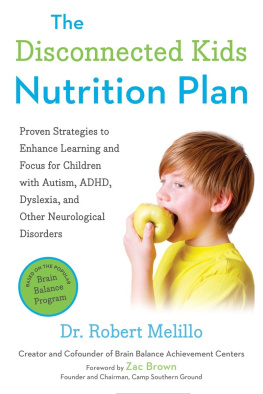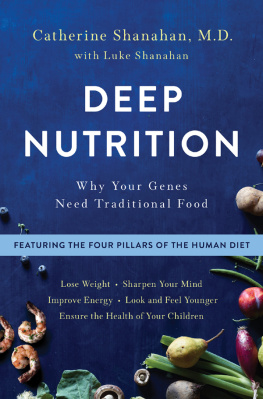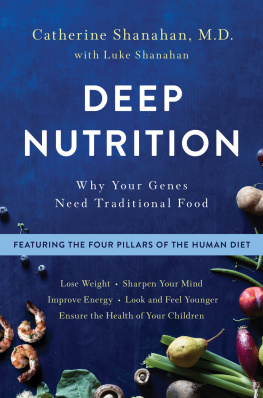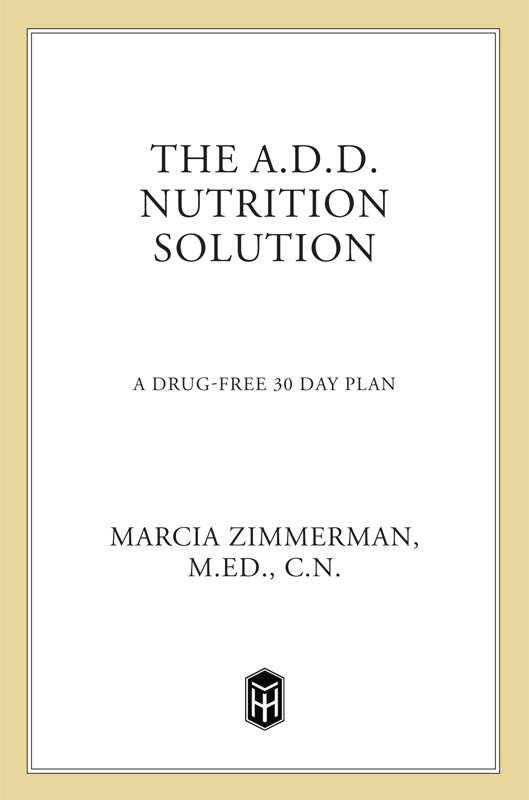
The author and publisher have provided this e-book to you for your personal use only. You may not make this e-book publicly available in any way. Copyright infringement is against the law. If you believe the copy of this e-book you are reading infringes on the authors copyright, please notify the publisher at: us.macmillanusa.com/piracy.
Contents
To Sean Michael with my love.
Love brings hope, trust, and understanding
You are a beautiful and talented person.
ACKNOWLEDGMENTS
The ADD Nutrition Solution has been a collective effort. My husband, Jon Zimmerman, has spent hours editing and formatting the book. My nutritionist colleague Carolyn Martinez has been tireless in her pursuit of products for your shopping cart, and she scrutinized hundreds of labels for offending ingredients. My nutrition associate Karla Schmidt kid tested dozens of recipes and analyzed them for nutritional content. Terry Zeyen from the UCLA Bio-Med Library scoured hundreds of papers, medical journals, and medical books, doing the scientific discovery for this book.
Special thanks go as well to my friend Jean Carper, my agent Jenny Bent, and my editor Amelia Sheldon, who have tirelessly helped me navigate the journey to publishing my first book; and to Natures Way of Springville, Utah, without whose help and encouragement this book could not have been written.
FOREWORD
When Marcia Zimmerman told me she was writing a book on attention deficit disorder and how to handle it through nutrition, I knew her book would be unique, for she brings to the subject years of lecturing, studying, and recommending diets that have helped countless children and adults overcome this misunderstood phenomenon.
I first met Marcia several years ago after one of her lectures in Baltimore and recognized that she was a first-rate educator as well as an expert in nutrition and the formulation of nutritional supplements. She is well versed in the chemistry of the body, which makes her extremely well qualified to speak out and give sober, nonhysterical advice on this troublesome disorder and, most important, a well-thought-out day-today practical plan, which at long last may help erase the underlying causes of ADD, not just its symptoms.
New scientific findings endorse this approach. Scientists now increasingly recognize that the brain is mightily influenced by nutritional factors. At a September 1998 conference at the National Institutes of Health in Bethesda, Maryland, on omega-3 fatty acids and the brain, researchers from all over the world reported the latest findings on how eating particular types of fat affected the neurological system. Both Marcia and I attended. Speaker after speaker tied a lack of essential fatty acids, including omega-3 fish-oil type oils, to errors in brain metabolism and information processing. The result: increased vulnerability to depression, schizophrenia, learning disabilities, dyslexia, and ADD. There was evidence that replenishing the fatty acids could correct certain deficiencies within brain cells, leading to improvement in symptoms and, in some cases, changes in the brain itself as verified by sophisticated brain imaging.
It is sobering to realize how dependent the brain is on the right foods at all stages of life and how critical nutrition is in shaping the structure and workings of the brain of a fetus as well as of a young child. Such sustenance, research shows, helps determine mental functioning, including intelligence, attention, concentration, problem-solving, and memory.
At the same time, one senses a new growing dissatisfaction with the way ADD is medically treated in this country, mainly with Ritalin. At a November 1998 NIH consensus conference on treating ADD, some psychiatrists raised their voices against the wholesale and perhaps lifelong use of strong stimulants, such as Ritalin, by children and adults. They argue, as does Marcia Zimmerman, that this drug does not address the real cause of ADD and may, in fact, cause irreparable harm.
In any event, Marcia Zimmermans ADD Nutrition Solution is a much needed and sensible answer to one of the nations most alarming and fast-growing problems. Anyone who needs help with this disorder should give her advice a try. The one-month trial it takes to find out if it works could make a monumental difference in the life of a child or an adult.
J EAN C ARPER
INTRODUCTION
Attention Deficit/Hyperactivity Disorder (AD/HD) is the fastest growing childhood disorder in the United States. According to information published in the Journal of the American Academy of Child and Adolescent Psychiatry in November 1996, an astounding 5 to 7 percent of American children and teens, approximately four million by 1999, are believed to suffer from attention deficits. In some areas of the country, about half of all students are labeled as victims of this mentally disabling disorder. In addition, another thirteen million adults are believed to suffer from AD/HD, bringing the total to a staggering seventeen million Americans who battle this condition daily. The rapid spread of AD/HD has been called an epidemic.
With the exception of AIDS, there are few examples of such a rapid epidemic spread of a serious condition in recent years, Gene Haislip, former administrator of the U.S. Drug Enforcement Agency, said in a DEA address in December 1996.
Many parents Ive talked to find these facts confusing and troubling. Are we labeling our children AD/HD simply because it is a convenient way to put down natural creativity and exuberance, or is there a real medical condition that we can prevent or address? As you may imagine, the answer is not a simple one.
AD/HD is a valid disorder; ask parents who have a child with the properly diagnosed condition and they will immediately agree. Adults who have been diagnosed with AD/HD, based largely upon symptoms dating from childhood, find comfort in knowing there really is a medical reason why they have had such a difficult time managing their lives. However, we have adopted a somewhat cavalier attitude toward this disorder in the 1990s, regarding it as a natural by-product of the social and environmental climate today. We almost make a joke of it, using it as a handy label for behavior that is unusual or even bizarre. Most of us have times when we think we have attention deficits, as if the condition exists within each of us, but we learn to overcome it. However, this is not so.
Attention deficit disorders are serious neurological conditions that can result in severe behavioral dysfunction. The American Psychiatric Association (APA) has compiled a list of symptoms most commonly associated with different types of AD/HD. Two sets of criteria, one for the AD/HD-inattentive type formerly called ADD, and the other for the AD/HD-hyperactive/impulsive type, have been published by APA in the fourth edition of the Diagnostic and Statistical Manual of Mental Disorders (DSM IV). These criteria are used by doctors to help identify those suspected of having the problem, and because they are listed in an official publication of psychiatric disorders, represent a serious diagnosis with potentially grave consequences.
Important Facts About AD/HD:
AD/HD is the most commonly diagnosed psychiatric condition found among young people
AD/HD affects 5 to 10 percent of school-age children according to top scientists. As much as 7 percent of the earths population may have AD/HDa total of 399 million, more than the combined populations of the United States, Mexico, and Canada







